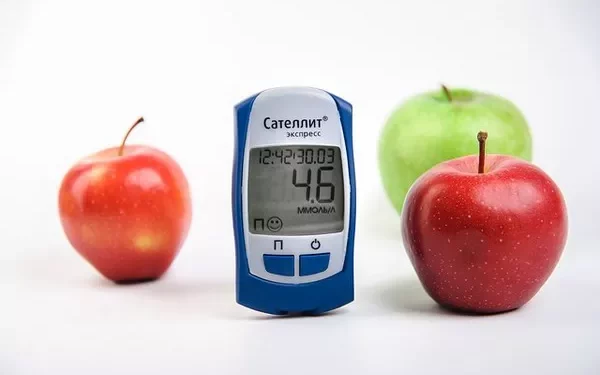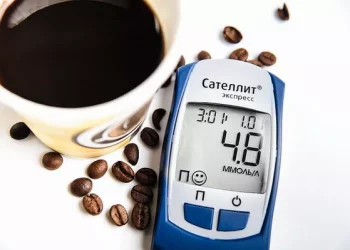Diabetes is a serious and chronic health condition that affects millions of people worldwide. One of the key aspects of managing diabetes involves monitoring blood glucose levels regularly. For individuals living with diabetes, understanding what constitutes “normal” blood sugar levels versus what indicates a diabetic condition is essential for proper management and treatment. This article delves into the specifics of blood glucose levels, defines what constitutes diabetes, and explains how blood sugar is measured to help individuals make informed decisions regarding their health.
The Role of Blood Glucose in the Body
Before exploring the specific ranges for diagnosing diabetes, it’s essential to understand the importance of blood glucose. Glucose is the primary source of energy for the body’s cells. It comes from the foods we eat, primarily carbohydrates, which the digestive system breaks down into glucose. After glucose enters the bloodstream, it is transported to the cells with the help of insulin, a hormone produced by the pancreas.
In a healthy individual, blood glucose levels are carefully regulated, ensuring that glucose is available when needed but not present in excessive amounts. However, in individuals with diabetes, this regulation is impaired, leading to either high or low blood sugar levels, both of which can be dangerous if left untreated.
What Is Considered Normal Blood Glucose?
For an individual without diabetes, blood glucose levels typically fall within a specific range. The American Diabetes Association (ADA) defines normal blood glucose levels as follows:
Fasting (No food or drink for at least 8 hours): Between 70 and 99 milligrams per deciliter (mg/dL)
Postprandial (Two hours after eating): Less than 140 mg/dL
Random (Any time of day, regardless of meals): Less than 140 mg/dL
These ranges represent the ideal blood glucose levels for a healthy individual. It is important to note that individual variations can occur, and these figures may vary slightly based on personal health conditions, medications, and other factors. However, generally, staying within these ranges ensures the body is efficiently processing glucose without causing harm.
Blood Glucose Ranges for Diabetes Diagnosis
Diabetes is diagnosed based on blood glucose levels that fall outside of the normal range. The following tests are commonly used to diagnose diabetes:
1. Fasting Blood Glucose Test (FPG)
The fasting blood glucose test measures the level of glucose in the blood after an overnight fast of at least 8 hours. This test is often used as a primary tool for diagnosing diabetes.
Normal Range: 70–99 mg/dL
Prediabetes Range: 100–125 mg/dL (also called impaired fasting glucose)
Diabetes Range: 126 mg/dL or higher
If the fasting blood glucose level is 126 mg/dL or higher on two separate tests, a diagnosis of diabetes is confirmed. If the level falls between 100 and 125 mg/dL, the individual may be diagnosed with prediabetes, a condition where blood glucose levels are higher than normal but not yet high enough to be classified as diabetes.
2. Oral Glucose Tolerance Test (OGTT)
The OGTT is another diagnostic tool used to measure how the body handles glucose. It involves fasting overnight and then drinking a glucose solution. Blood glucose is measured at multiple intervals after the drink. The most common measurement is two hours after consuming the glucose solution.
Normal Range (2 hours after glucose drink): Less than 140 mg/dL
Prediabetes Range (2 hours after glucose drink): 140–199 mg/dL
Diabetes Range (2 hours after glucose drink): 200 mg/dL or higher
If the blood glucose level is 200 mg/dL or higher two hours after the glucose drink, a diagnosis of diabetes is confirmed. Like the fasting blood glucose test, levels between 140 and 199 mg/dL indicate prediabetes.
3. Hemoglobin A1c Test (HbA1c)
The HbA1c test measures the average blood glucose level over the past 2 to 3 months by assessing the percentage of hemoglobin (a protein in red blood cells) that has glucose attached to it. This test does not require fasting, making it a convenient option for monitoring blood sugar over time.
Normal Range: Below 5.7%
Prediabetes Range: 5.7% to 6.4%
Diabetes Range: 6.5% or higher
A diagnosis of diabetes is confirmed if the HbA1c level is 6.5% or higher. An HbA1c between 5.7% and 6.4% indicates prediabetes. This test is often preferred for its convenience and ability to reflect long-term glucose control.
4. Random Blood Glucose Test
The random blood glucose test measures blood sugar at any time of day, regardless of meals. This test can be performed quickly and easily, but it is less specific than fasting or oral glucose tests.
Normal Range: Less than 140 mg/dL
Diabetes Range: 200 mg/dL or higher
If a random blood glucose level is 200 mg/dL or higher and the person has symptoms of diabetes (such as excessive thirst, frequent urination, or unexplained weight loss), a diagnosis of diabetes may be made.
Types of Diabetes
There are several types of diabetes, each with its unique characteristics and management strategies. The most common forms include:
Type 1 Diabetes
Type 1 diabetes is an autoimmune condition in which the body’s immune system attacks and destroys the insulin-producing cells in the pancreas. This leads to little or no insulin production, and individuals with Type 1 diabetes require lifelong insulin therapy to manage their blood glucose levels.
Type 1 diabetes is typically diagnosed in children or young adults, although it can develop at any age. Blood glucose management is crucial to prevent complications such as diabetic ketoacidosis, nerve damage, and cardiovascular disease.
Type 2 Diabetes
Type 2 diabetes is the most common form of diabetes and is often diagnosed in adults. It occurs when the body becomes resistant to insulin or when the pancreas cannot produce enough insulin to maintain normal blood glucose levels. Lifestyle factors such as poor diet, lack of exercise, and obesity are significant risk factors for developing Type 2 diabetes.
Type 2 diabetes is often managed with lifestyle changes, oral medications, and, in some cases, insulin therapy. Regular monitoring of blood glucose levels is essential for controlling the condition and preventing long-term complications such as heart disease, kidney damage, and vision problems.
Gestational Diabetes
Gestational diabetes occurs during pregnancy and typically resolves after childbirth. However, it can increase the risk of developing Type 2 diabetes later in life. Women who are diagnosed with gestational diabetes must monitor their blood glucose levels closely during pregnancy and may require insulin or other medications to keep their levels within a healthy range.
The Importance of Monitoring Blood Glucose
Monitoring blood glucose levels is critical for individuals with diabetes, as it helps determine how well the body is managing glucose. Consistent monitoring can also help prevent complications, including heart disease, kidney failure, and nerve damage. Regular blood sugar checks can also help identify patterns that may require adjustments in diet, exercise, or medication.
For people with Type 1 diabetes, continuous glucose monitoring (CGM) devices are often used to track blood glucose levels throughout the day and night. These devices provide real-time information and help individuals make timely adjustments to insulin doses. People with Type 2 diabetes may use traditional blood glucose meters or CGM devices, depending on the severity of the condition and the treatment plan prescribed by their healthcare provider.
What Happens When Blood Glucose Levels Are Too High or Too Low?
Both high and low blood glucose levels can lead to serious health complications.
High Blood Glucose (Hyperglycemia)
When blood glucose levels are consistently high, it can lead to hyperglycemia, a condition that can cause symptoms such as:
-
Increased thirst and hunger
-
Frequent urination
-
Fatigue
-
Blurry vision
-
Slow-healing wounds
Long-term hyperglycemia can cause damage to blood vessels, leading to complications such as heart disease, kidney failure, and nerve damage.
Low Blood Glucose (Hypoglycemia)
Hypoglycemia occurs when blood glucose levels drop too low, typically below 70 mg/dL. Symptoms include:
-
Shakiness
-
Sweating
-
Confusion or dizziness
-
Irritability
-
Headache
Severe hypoglycemia can lead to unconsciousness or seizures, making it important to address low blood sugar levels immediately with fast-acting carbohydrates.
Conclusion
Understanding the range of blood glucose levels and knowing when they indicate a diabetic condition is crucial for individuals managing diabetes. The diagnosis of diabetes is based on specific blood glucose tests, including fasting blood glucose, oral glucose tolerance tests, hemoglobin A1c levels, and random blood glucose measurements. Each of these tests helps to determine whether an individual’s blood glucose levels fall within the normal range, indicating a healthy individual, or outside the normal range, suggesting prediabetes or diabetes.
By maintaining blood glucose levels within a healthy range, individuals with diabetes can significantly reduce the risk of complications and improve their quality of life. Regular monitoring, dietary adjustments, exercise, and proper medication are key components of effective diabetes management. If you or someone you know is struggling with blood glucose regulation, working with a healthcare provider is the best course of action to ensure optimal health and well-being.
Related topics:
What Are the Who Standards for Blood Sugar Levels?
























